Muna Kalyak Blaan: Reconnecting Cultural Identity through Cultural Materials
Exhibit Description
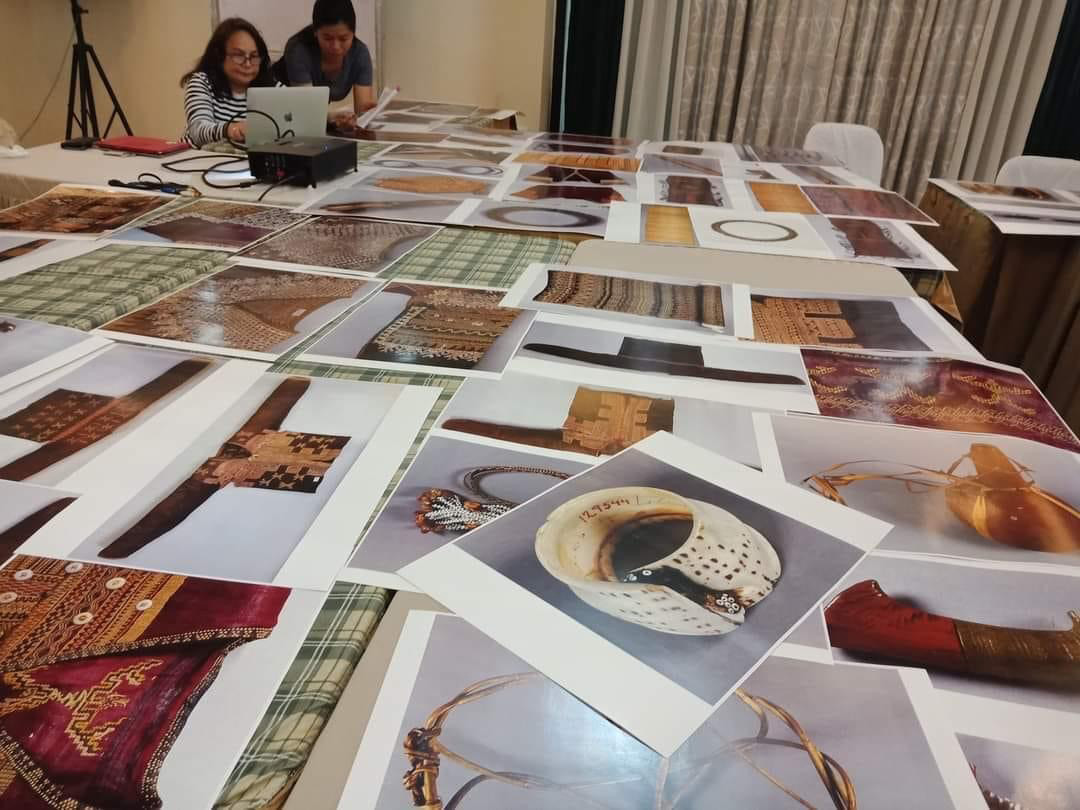
PROCESS DOCUMENTATION of GATHERING to RECONNECT PHILIPPINE BLAAN CULTURAL MATERIALS STORED OUTSIDE THE COUNTRY
by Dyisi Salway
Date: June 27-28, 2022
Venue: Horizon Suites and Arcade, Yumang St, General Santos City, South Cotabato
June 27, 2022 - 1st Day
1. INTRODUCTION
The conversation started at almost 11am in the morning on June 27, 2022 using the traditional informal conversation for the participants to feel comfortable (it started late due to distance of the participants from the venue and that close kin or an assistant is needed to guide them). With Miss Maribeth Bantilan Farnazo as the convenor of the event, she introduces Ms Marian Pastor Roces and Ms Maria Cristina Juan to the participants. One of the participants named Delia Salminang asked, “What are we going to do here?” Miss Farnazo simply replied with a smile and told them just to relax and have some coffee and snacks because there is nothing to worry about.
While waiting for others to come, early arrival participants have been shown photos of the cultural materials of their ancestors handed by Miss Juan taken from the museums. To their amazement they were nailed to their seats while looking at different photos. Some identified the photos, some have forgotten.
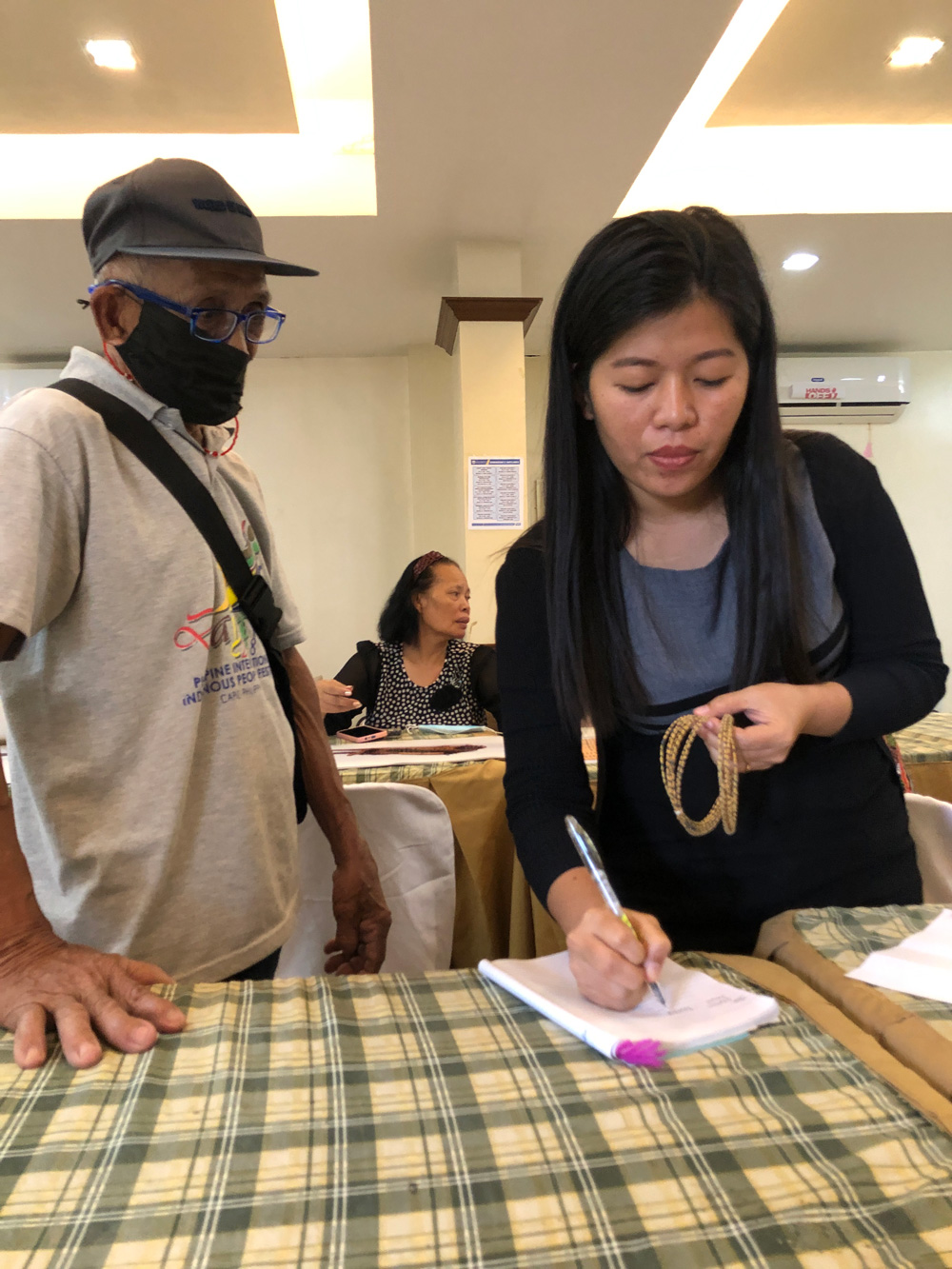
One of the participants named Fulung Tawada Bantilan then showed his “tikas” after he saw the same photo of it.
The conversation started with the introduction of the participants one by one. To wit; 1. Bai Deborah M. Ganton, 67-year-old, Maasim; 2. Bai Andrea “Diya” Martin Lawa, 85-year-old; 3. Bai Estelita Tumandan Bantilan, the Gawad ng Manlilikha ng Bayan GAMABA Awardee for weaving traditional mat ‘igem’ from Upper Lasang, Malapatan, Sarangani Province. Introducing herself as the Bai Fulung Manem Igem means ‘a respected woman who weaves mat’. Her Blaan name is ‘Bai Labnai’ which is commonly called by the community members; 4. Fulung Tawada Bantilan, 91-year-old, born in 1931, a husband to Mrs Estelita Bantilan.
In the middle of the introduction, Fulung Fredo P. Basino, the adviser to the Sarangani Provincial Tribal Council in Sarangani (SPTC) who is also serving as the Policy Development Adviser to the Governor of the said province is recognized.
To continue, 5. Bai Adela Engkong, 58 year-old; 6. Bai Delai Salminang, 59 year-old from the Municipality of Glan thanked Ms Marian and Ms Cristina whom she referred as women from Manila with Ms Maribeth who connected and invited them to be present on the event; 7. Bai Lorcita Bantilan Manggay, youngest daughter of Bai Estelita who personally assisted her and is learning the weaving through her mother; 8. Joseph C. Engkong, son of Bai Adela from Glan; 9. Jessa Bendigo, from Jose Abad Santos; 10. Bai Mary Joy E. Dela Cruz, a Blaan professional teacher and cultural worker from the Municipality of Malungon; 11. Ms. Aico Grace C. Ganton, 33 year-old, daughter of Ms Deborah from Maasim then later grew up in Burias, Glan; 12. Ms. Dyisi Salway, introducing herself as the Blaan Lagad means Blaan in the far-flung areas, working in partnership with Indigenous Peoples Mandatory Representative through Ms Maribeth as the Administrative Officer; 13. Bai Maribeth Farnazo, the lead convener and facilitator of the event; 14. Ms Marian Roces, introducing herself as ‘friend of Bai Estelita’ from Manila; 15. Fulung Fredo P. Basino would just simply introduce himself as ‘Sir Fred’ or ‘Fulung Fred’. He then introduced Ma’am Marian and gladly shared how thankful he was when the later sat in the panel during his presentation in the Asian Institute of Management. Lastly, 16. Miss Cristina Juan introduced herself that she is ‘Bisaya’ or ‘Cebuano’ from Cebu. The participants then shared their joy by laughing at the fact that they can understand each other by using the same language of Cebuano. She further explained that she partnered with Miss Marian, Miss Maribeth for this project of the cultural materials that are now being stored outside the country such as Chicago, New York City and others. The year of acquisition of the material was in 1911. This means that the materials were made before the mentioned-year. These are preserved carefully in the storage room of the respective museum. Miss Cristina then thanked Miss Maribeth for organizing the session to meet with the identified cultural workers in the field.
Miss Marian explained further about the materials, she asked Miss Maribeth to translate her words into Blaan dialect sentence by sentence.Miss Marian said “paliwanag ko lang pokung bakit itong materials na ito ay nasa ibang bansa.” (I’ll just explain why thesematerials were in other countries.)
Miss Maribeth (in Blaan)” Man-gu di gamu duen dad kalyak ani ditu di mawag banwe.
Miss Marian, “Hindi lamang Blaan, buong Pilipinas. Blaan, Bagobo, Cebuano, Yakan, at iba pa.” (Not only Blaan but the whole Philippines. Blaan, Bagobo, Cebuano, Yakan, and other IP groups.
Miss Maribeth (in Blaan), “La lo Blaan, kabay dareme tribu di Pilipinas. Mda dad kalyakla ditu di dadereme Banwe.”
Miss Marian, “Itong group na ito, matagal na matagal nang nasa America.”Miss Maribeth, “Mda dad kalyak ta too la ti mlo ditu di mawag banwe, busek la.”
Miss Marian said, “these materials had been stored more than 100 years in the museum. (The oldest participant in the team is 95-year-old). The materials were created and used in the time of the great grandfather of the oldest participant’s named Tawada Bantilan. These are in America, Europe, Japan, Spain and other countries. Our cultural things are everywherein the world.“These are stored in the museum, not in display area but in the storeroom.
If you asked how these things were in their kept?These group of materials were bought through coinage or by trading. These were not stolen. (Emphasizing that smuggling exist just these days not like the old days)
You’ll laugh when you see the prices of the item when sold. (peoples’ way of collecting is shown on the big screen by Miss Cristina). Some were sold at Php 2.00, Php 1.00 and even .50 Cents. (Fulung Basino then interposed that monetary value was higher at that time. The participants then happily shared laughter as they continue looking at the prices sold).
Looked at the price of each item. There are good at making notes (referring to the collectors of the materials). There are also exchanged materials by trading.
Ms Marian contninues: So, what happened to us, not only in Blaan but even true to other IP groups? Almost all our cultural materials are nowhere to be found in the Philippines. Therefore, our children, even at our age, we only knew a few these so is the younger generations have less knowledge on the later.
Then, what we do not know?
- How excellent our ancestors are.
- The things they used commonly used everyday are nice and advantageous.
- These materials were the things that are sold first with monetary value. Because in the old days selling was not familiar to them. They made beautiful things as a gift during wedding and a gift of friendship to the visitors.
But I am happy knowing that there is someone making, like the princess of my life (referring to Bai Estelita the GAMABA awardee) because she is good at making mats not in exchange for money but for friendship. I am so glad until now. That culture of giving is so good because it is so traditional.
Now, what shall we do? It’s good that we have someone to help us – Dr. Cristina Juan from the University of London. Her project is to put all the cultural materials in different museums into an online platform so that Filipino and other people can see and be able to identify what are stored in the museum.
The printed High-Definition Photos sponsored by Ms Cristina Juan will be turned over to the Blaan IP group in Sarangani Province to be cared of by Ms Maribeth Farnazo as the contact person and in-Charge with the help of Ms Marian Roces as the curator.
Meanwhile, Fulung Fredo Basino then talked to the group, expressing his support to the project then told them of the proposed project of the newly assumed administration of Governor Rogelio ‘Ruel’ D. Pacquiao. The project is all about an establishment of an IP Eco Village where each tribe in the province will develop a community or a village in which we can see the way of life of the Indigenous Peoples as to their culture and practices. An establishment of museum is also part of the proposed village. Additionally, he suggested that the photos be stored temporarily in the IP Center if possible so the provincial. government of Sarangani will see the need of Tribal Museum of the things. He also assured everybody that the group of leaders of the tribe of the province of Sarangani, the Sarangani Provincial Tribal Council (SPTC) supported the event with SOAS university with the Council Resolution after Ms Maribeth presented the concept during their regular meeting. Sarangani consists of 44% of Indigenous Peoples per Philippine Statistical Record on Census of Population and Housing 2020.
II - NOTES about the Objects (see the object tour below for all the annotations added to the site)
1.LBUNG
2.SLAUNG
3.IGEM
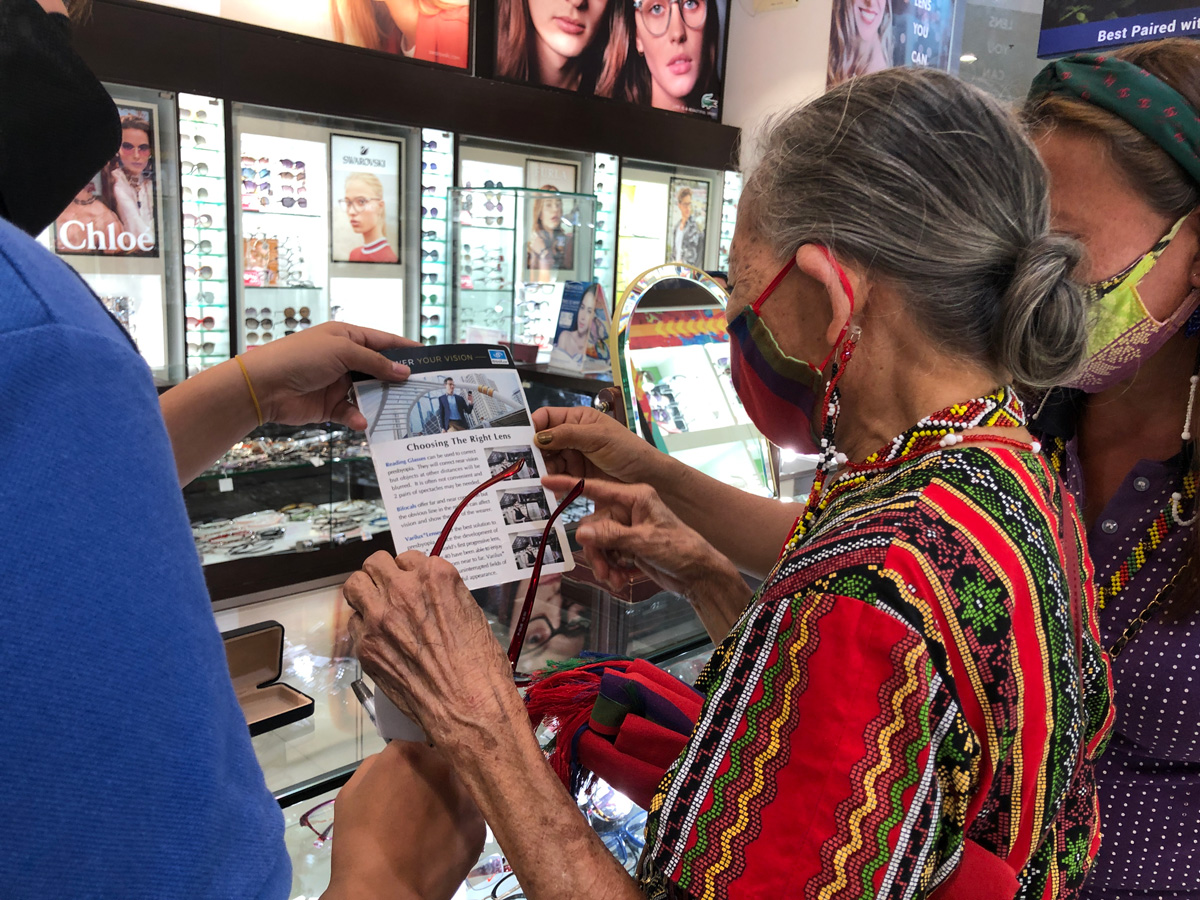
In the middle of the session, and on the recommendation of Bong Fulung Fredo Basino that there must be a ritual to be done. Because the participants noticed that wisdom is infrequent in identifying the materials. A ritual is a ceremony done by most of the Indigenous group to ask for the consent or wisdom by their ancestors to allow them used and utter the things which previously belongs to them. Aside from it, the participants had a hard time in identifying the materials due to the condition of their eyes, given their age. Using reading glasses is being endorsed by everyone so that they can see the details of the photos properly. They agreed to rest for lunch break and resume after buying reading eyeglasses at the nearest mall in the area.
After coming back, they were all in delight and thankful as each of them received their brand-new eyeglasses from Ideal Vision, sponsored by Ms Cristina Juan. An additional participant from the municipality of Malungon was added in the person of Mandule Edday, seventy-six (76) year-old.
The Object conversation then continued (see the objects tour below for all the annotations)
4. KAWAW
5.GUFNÈ KULANG TANÀ
6.BAKÈ
7.TANENG
8.KLUNG
The first day ended with a group photo. All the participants were in-house in a guest room of the venue to avoid delay on the next day due to far location.They were all delighted for accommodation.
2ND Day
June 28, 2022
REFELECTION
On the 2nd Day, reflection from the previous day of activity was solicited from the participants while waiting for the Fulung Adolfo S. Fanagel to conduct the ritual to proceed for the identification.Here are some responses:
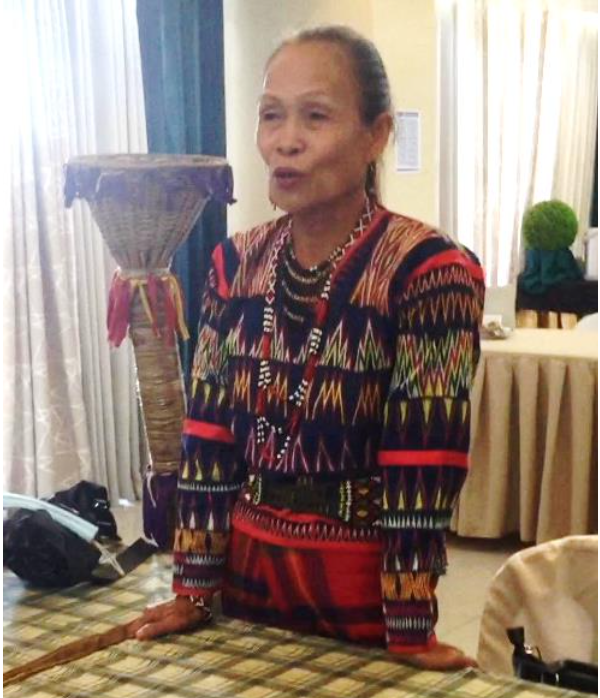
Deborah Martin Ganton, 67-year-old confess with an emotional undertone that she became emotive upon seeing the photo of the materials. Even she at her age rarely saw those things but sadly those they considered ‘kasaka’ treasures can only be seen and now being stored in the other country. I am happy at the thought of seeing, but at same time I am sad for the fact the materials cannot be held by us anymore in memory of our ancestors. If we could be given time and opportunity to return it to us but she thinks it’s an impossible thing.
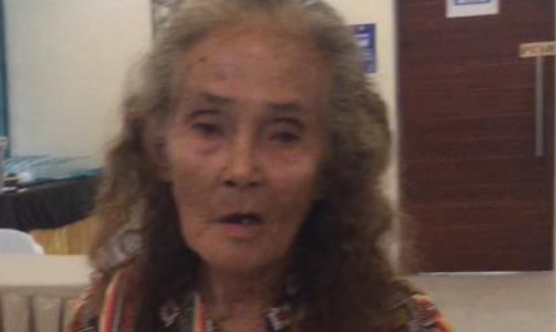
Andrea Martin, 85-year-old also said that she wanted to skip of telling her side because her heart is in tears as she also relates to the previous speaker what happened to the cultural materials. Mixed emotions happiness and sadness for thesame thought and fact.
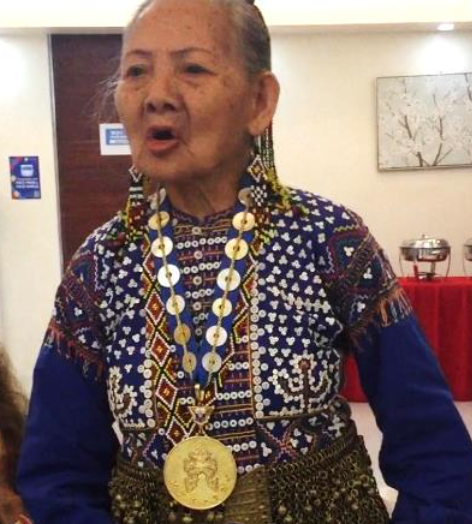
Bai Estelita ‘Bai Labnai’ Tumandan, GAMABA Awardee is happy because there is someone who became an instrument for the event to be conducted, referring to Miss Marian whom she already knew, Miss Cristina Juan, Miss Maribeth Farnazo who contacted them to make them possible to come and join. She is also happy that her mother taught her how to make a ‘mat’ which she valued and that created a big title role in her life.
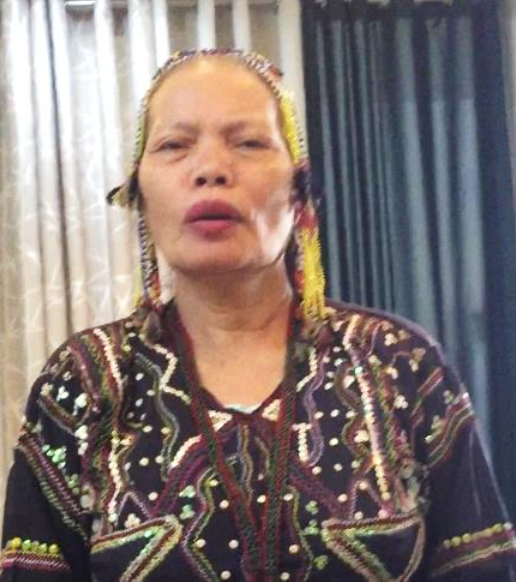
Delia Salminang from Kyalat, Glan, fifty-nine-year-old (59) also thanked all the persons involved. She said that the event makes her realize that she must continue in doing cultural materials asthe identity of her Blaan group. She also gave thanks to Fulung Fredo Basino for being persistent in working with the government agency to impact the Indigenous Peoples community.
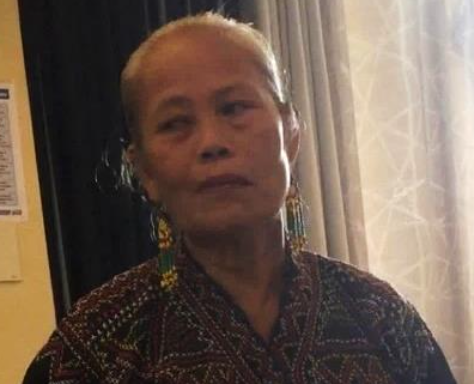
Delia Engkong is happy in seeing the photos as she arrived yesterday, this tells her to remember her ancestors by continuing the job. She also notes the importance for the younger generation to know and understand their culture of where they belong to as their self-identity. By the help and grace of God she is confident to continue the desire.
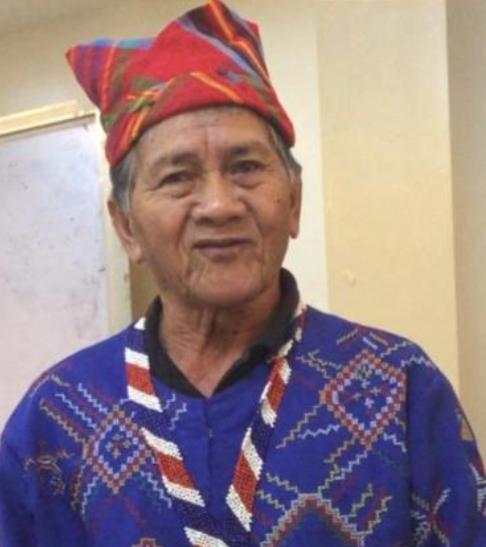
Mandule Edday. seventy-six-year-old (76) said he doesn’t know that her two daughters will bring him to the event but he is thankful though for meeting other cultural makers and Blaan like from another town. He is not used to join such event. He added that the event is a wake-up call by God for them as they went tosleep in realizing their Blaan identity. He believed that God gave them the knowledge in knowing the materials that the ancestors used.
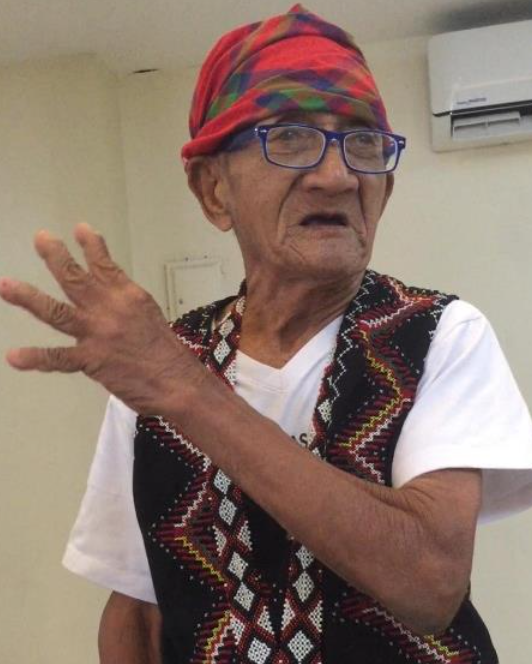
Tawada Bantilan, ninety-five-year-old (95) the oldest among the participants almost in tears as he utters her realisations of the event. He thanked the participation of everybody though they came from different locations of the province they were in one mind and identity the materials.
Miss Maribeth then allowed the younger participants to share their realisations for their point of view as to what they aspire in their lives and for their culture.
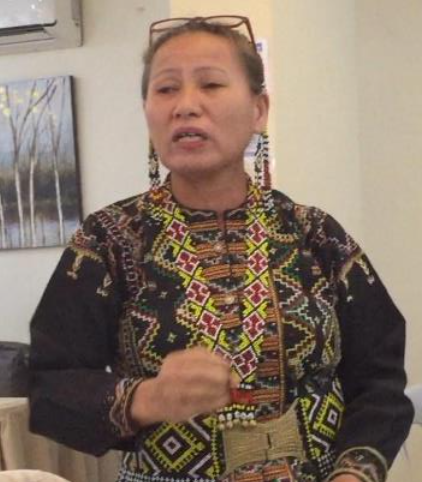
Lorcita Bantilan Manggay, forty-eight-year-old (48), the youngest daughter of Bai Labnai. She is trained by her mother in making the traditional mat. She is happy that at her age she thought that she saw is plainly the true cultural identifier of the Blaan but as she saw the photos she was amazed and understood many things.
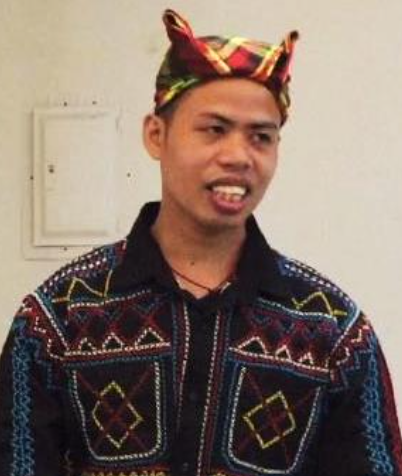
Joseph Engkong, 28-year-old, He appreciated his attendance to the event that he was able to see the photos of the aged cultural material of more than a hundred years and he inspired to replicate the same to maintain the identity. He is amazed at how our ancestors knew how to make those things without having proper education.
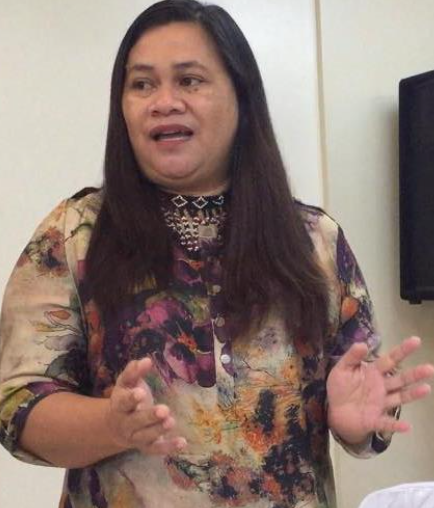
Mary Joy Edday, a teacher by profession and currently teaching where majority of her students are Blaan is joy at the taught that she can share to her students what she saw and learned through the event. She promised that as she returns to teaching, she will explain to her students that they must treasure those cultural materials because even other race of people from other country makes it as a treasure to how much more to the Indigenous People. She is sad that we are so clever in modern learnings such as English and western education but we are nothing when it comes to identifying our own cultural identity. If she could rate herself from 1-10, she will give it 3 for her lack of knowledge of the materials. She encourages the elders to continue in doing, to revived and value it for the generation like her and the next to come. She is proud to be part of the event, that could help her to reach the young minds through the Indigenous Peoples Education program of the institution she belongs to. She added that because of the lack of technology of preserving the materials, replication of it would be of great help to the community.
That the ends of the sharing of the reflections of the participants.
To formally start the second day, Miss Maribeth acknowledges the presence of Fulung Fanagel to conduct the ritual.
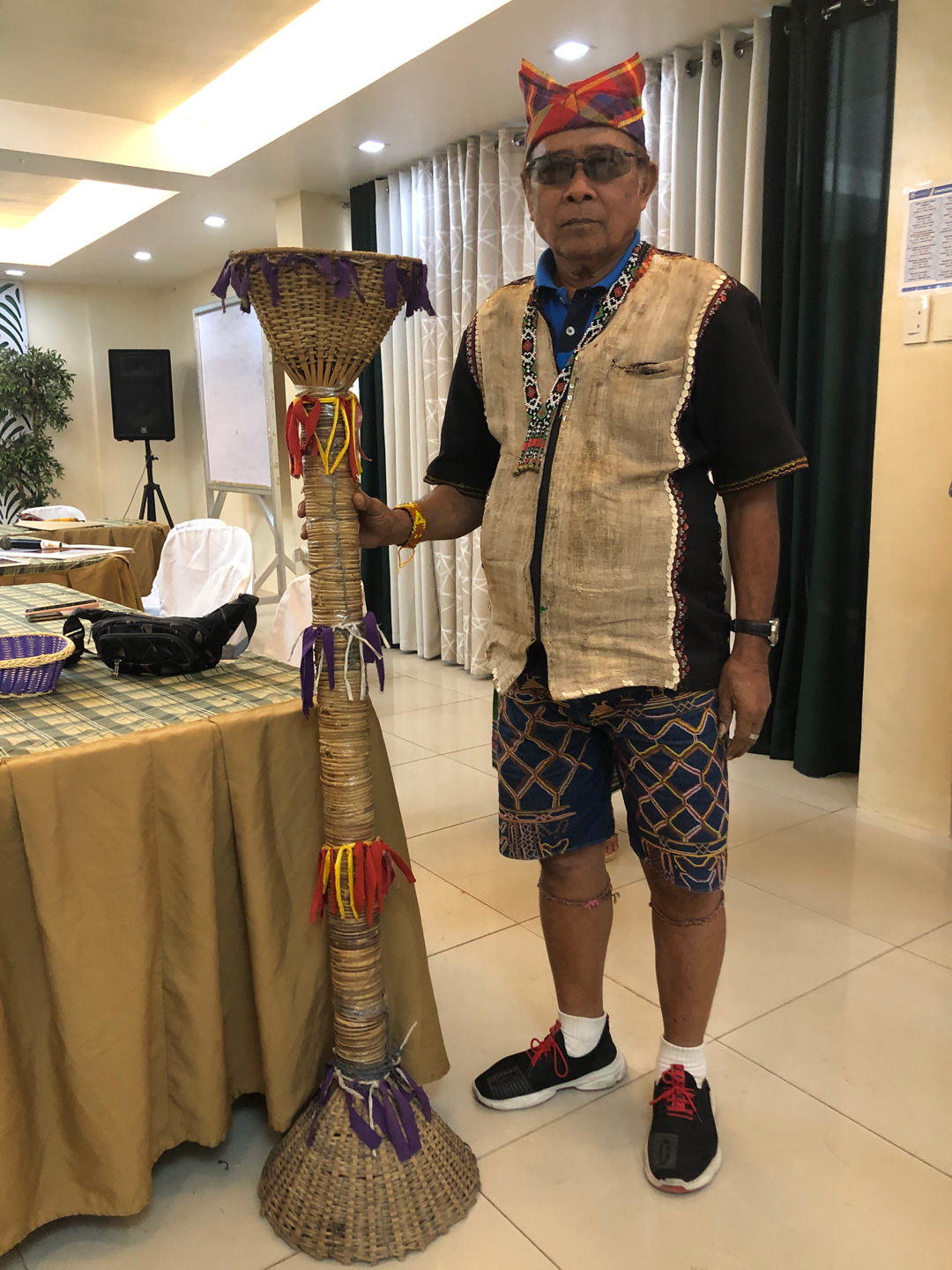
They formed half a circle to start the ritual called ‘damsù’. Fulung Fanagel then started by putting all the necessary things inside the ‘sabak’’. Sabak is the container to put all the kinds of offerings to please the spirit of the ancestors and to ask permission to use or name the ancient things which only belongs to them.
The sabak was decorated with other cloth called ‘dad kasan’ which literally means, decoration. The material used is rattan ‘luas’.
The food offering inside the sabak were the following:
- Egg
- Namà,
- Tabacco,
- Aful
- The coins.
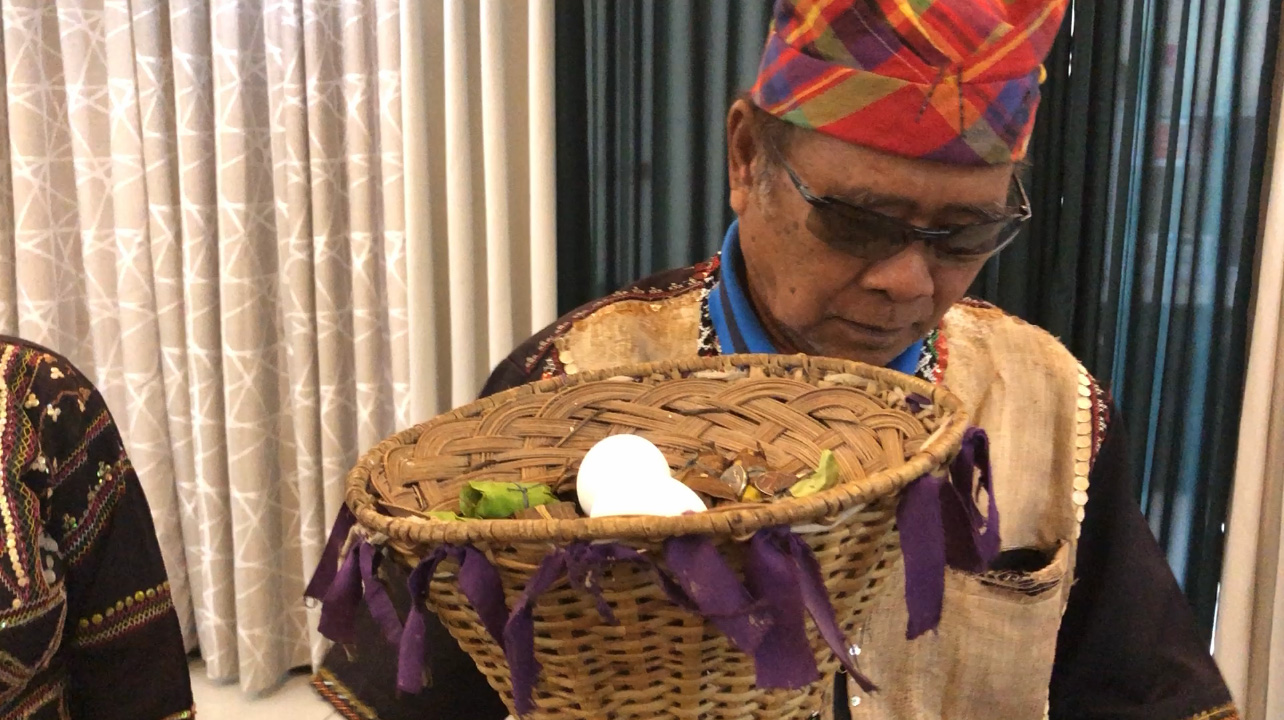
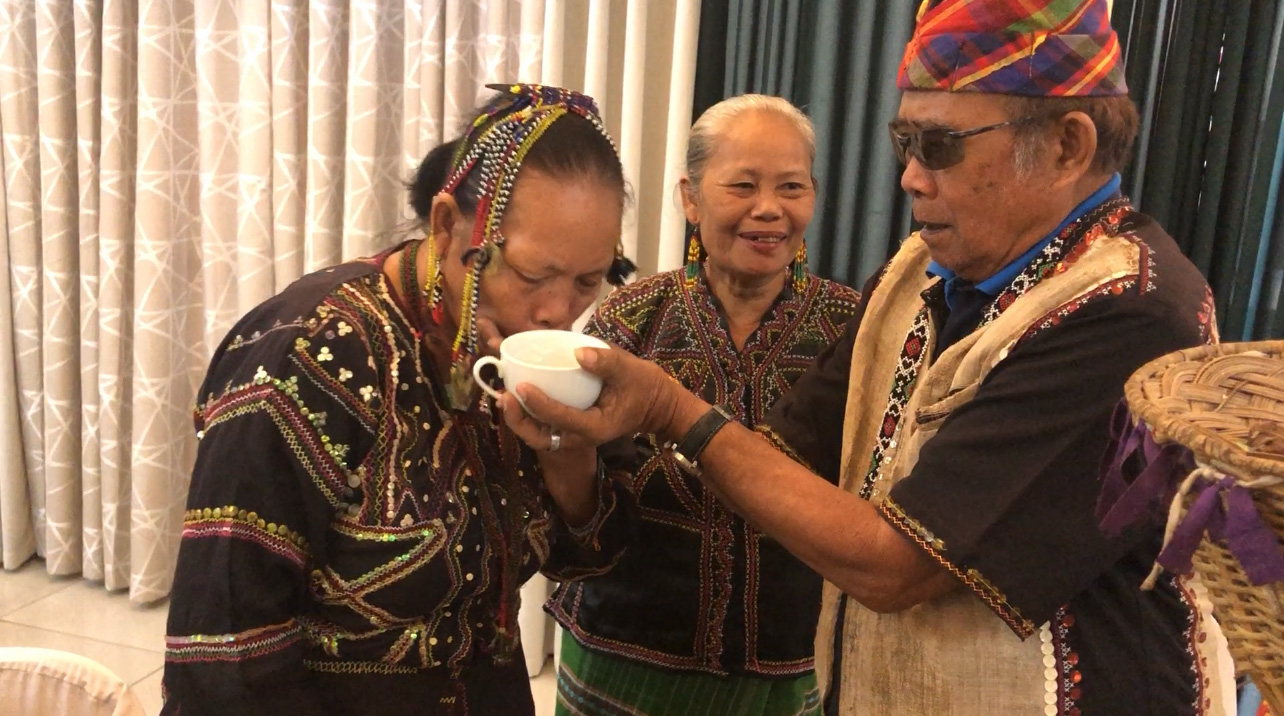
Then the participants offered coins as a metal to ask the blessing to strengthen their physical body. It is believed that when you do not follow this ritual you will get sick which literally makes your body weaker especially if this pertains to the ancient cultural things. Some also drank from the glass of water with coins inside as an addition.
The participants then returned to their own seats and continued the conversation around the objects.(see object tour below for the annotations)
11.TANANGGONG
12.KYAWIT
13.SUNDANG
14.FAIS
15.SIGI
16.BALKAW
17.SINGKIL BALNATUNG
18.TABIH
19.SFUT
20.BOHOL NA FANÀ
21.TIKAS
22.GALING TLAYONG
IV. CONCLUSION
Miss Cristina introduced the website to freely look at the photos of the cultural materials stored in the museum in other countries. To cool the atmosphere, Fulung Fanagel tells the story of FLASAB AND BLI. The story is the origin of the lineage of Blaan (Flasab) the older brother and the Muslim (Bli) the sister of Flasab. Miss Cristina Juan then thanked all the participants for their efforts in participating in the two (2) day event. She hopes to continuously work with them for the next endeavor regarding cultural materials. For closing remarks, Fulung Fredo P Basino summarized his reflections on how timely the event is. He shared that he introduced the documentation of the cultural materials. Basino added that you cannot separate the identification of the materials from the wisdom of the Indigenous People. Because there was no written document and bases as to where the Blaan learned their skills. Basino emphasizes that according to the book he read that the history about the Blaan is written on the structure of the community. Because the memory of the existence of the group is in. Such as where the tree is planted is where the umbilical cord or the forefathers and being buried. It a place where some event happened. He also assures everybody that he will share everything to the Tribal Council of Sarangani Province. He encourages and thanks everybody to continue the work where they see it helping the identity of the culture of the Blaan, namely; Miss Marian, Miss Cristina, Miss Maribeth and all the participants.
Miss Maribeth also thanked the participants for the trust they have given her without formal invitation through paper but they were just a call or text away.
To close the event, certificates of recognition were given to each of the participant as a proof and to recognize them of the knowledge they shared in the two-day activity.
The event ended with the group photo of the participants with the facilitators. Each one was also given an envelop with some monetary gift in it as a thank offering for the effort they spent and parted ways to return to their own community and home.
Submitted by:
DYISI SALWAY
Process Documenter